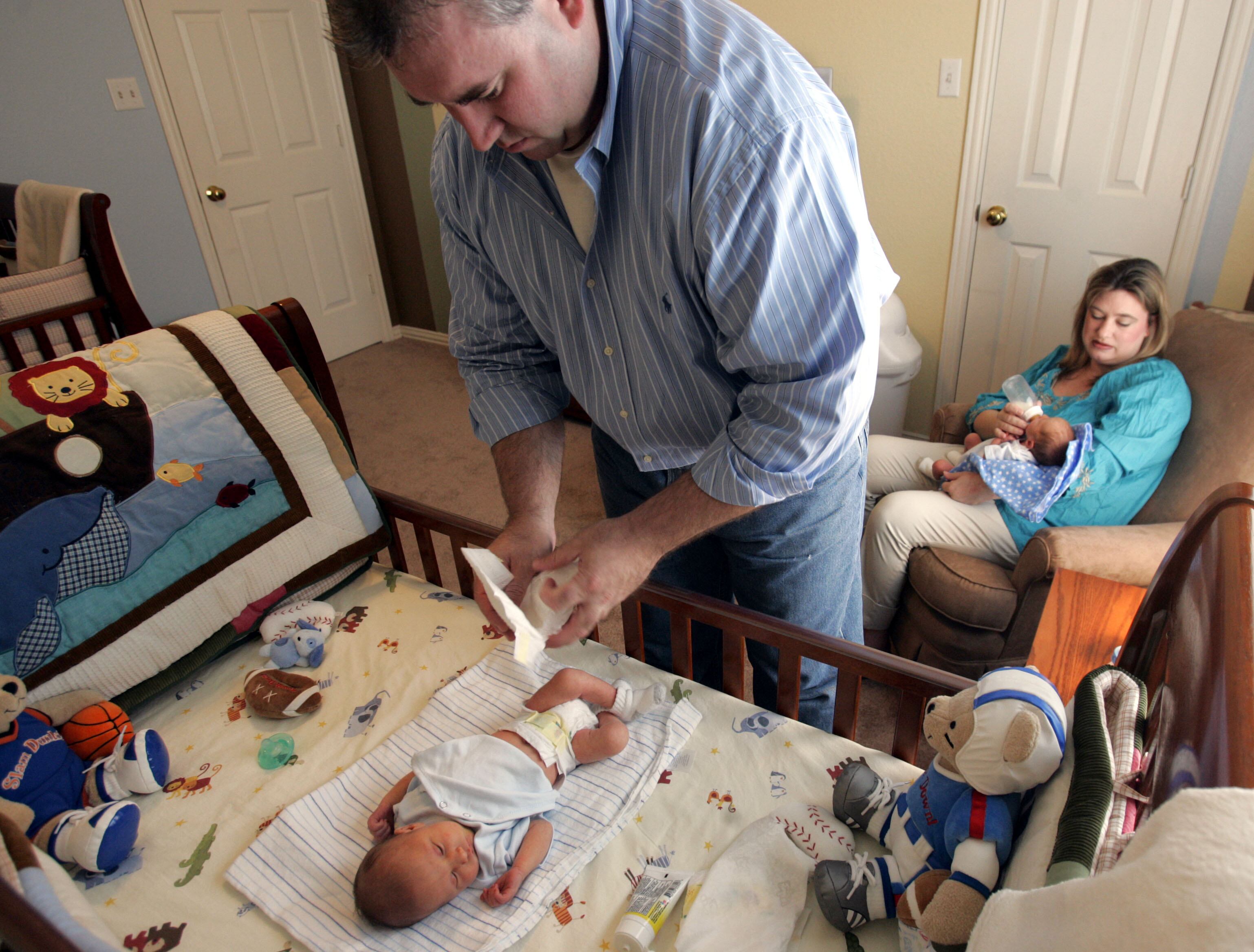As the Biden administration pushes for the government to be a “model employer,” inclusive and able to recruit competitively, lawmakers say they’re concerned that not enough federal employees are taking advantage of an important workplace benefit: paid family leave.
In a letter to Kiran Ahuja, the director of the Office of Personnel Management, more than a dozen Democratic, Republican and Independent lawmakers urged the agency to update websites, handbooks and fact sheets on parental leave, which are nearly a decade old and make no mention of changes that vastly expanded paid leave for the workforce that went into effect in 2019.
About 4% took advantage of the benefit from 2020 to 2022, a percentage point higher than OPM forecasted, according to the Government Accountability Office.
“Although OPM plans to have the guidance updated ‘by the end of 2024,’ we stress that as [the Federal Employee Paid Leave Act] has now passed its fourth anniversary of enactment, this deadline should be seen as a floor and not a ceiling,” wrote Rep. Chrissy Houlahan, D-Pa., alongside members of the House and Senate Paid Family Leave Working Group.
RELATED

Prior to FEPLA, which passed with the 2020 National Defense Authorization Act, government employees had no long-term paid time for the birth or adoption of a child. Workers could take advantage of uncompensated leave under the 1993 Family and Medical Leave Act, but employees and unions said that imposed financial hardship on growing families and caretakers.
Active duty military service members were granted fully paid maternity leave in 2016.
Parity was achieved in October 2020, when government workers became eligible for 12 weeks of paid leave for the birth, adoption or foster of a child. The move had the support of Democrats who had been pushing for better leave policies for years and then-President Donald Trump, whose daughter, Ivanka, helped spearhead the effort for fellow Republicans.
The public is generally receptive to sweeping paid family leave offerings, according to recent research. In a survey of voters in 2019, 71% of Republican voters and 94% of Democrats agreed that the older FMLA law needed updating, according to the National Partnership for Women and Families.
With concerns about the “aging” federal workforce being unable to recruit younger workers, it’s not clear how much of the current population would take advantage of this. The average age of public servants is 47 years old.
Still, lawmakers are seeing positive results of the program on retention and are thus pushing for more awareness of the program within agency offices.
Despite the relatively low use governmentwide, the availability of FEPLA had a “great” or “moderate” influence on deciding to stay in the job for 55% of feds under 40, GAO found last month.
“With greater awareness and information provided by OPM, we are confident that this number would be higher,” lawmakers wrote.
RELATED

In its response to GAO’s findings, OPM said it has not updated its handbook or resource guides on leave due to competing priorities and limited staffing.
“In our view, this explanation is inadequate to justify this long delay, and it is essential that OPM prioritize updating its handbook,” lawmakers said.
Other concerns raised by the GAO reported cited in the congressional letter include disparities in how much of the 12 weeks employees actually use.
Depending on the agency, OPM noted in its governmentwide survey that some returned to work early because they were concerned about impacts on their career advancement or they they had coworkers or supervisors that didn’t support use of the full 12 weeks.
OPM said ongoing research will further illuminate discrepancies that need to be addressed.
Generally, federal employees are eligible for paid parental leave if they:
- are also eligible for FMLA;
- have not exhausted FMLA leave;
- worked for at least 12 months or 1,250 hours of federal service;
- are full- or part-time; and
- have an appointment of a year or more.
Employees must then agree, in writing, to work at least 12 weeks after their leave ends. The benefit is provided at full pay and does not take away from annual or sick leave banks.
Molly Weisner is a staff reporter for Federal Times where she covers labor, policy and contracting pertaining to the government workforce. She made previous stops at USA Today and McClatchy as a digital producer, and worked at The New York Times as a copy editor. Molly majored in journalism at the University of North Carolina at Chapel Hill.





